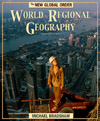Study the Key Terms in this chapter. Consult the glossary as needed.
|
_____ Collectivization
|
a. promotes Japanese trade and products abroad
|
|
_____ Commune
|
b. a trading port and distribution center
|
|
_____ Entrepot
|
c. economic activity conducted by Chinese people who live outside
of China
|
|
_____ Household responsibility system
|
d. encourages foreign investment and export-orientated manufacturing
|
|
_____ Ministry of International Trade and Industry
|
e. combines agriculture, industry, trade, education, and local militia
|
|
_____ New rice technology
|
f. surpluses could be sold on the open market
|
|
_____ Special economic zone
|
g. part of the Green Revolution
|
|
_____ Transnational Chinese economy
|
h. individual farms grouped into cooperatives
|



 2002 McGraw-Hill Higher Education
2002 McGraw-Hill Higher Education